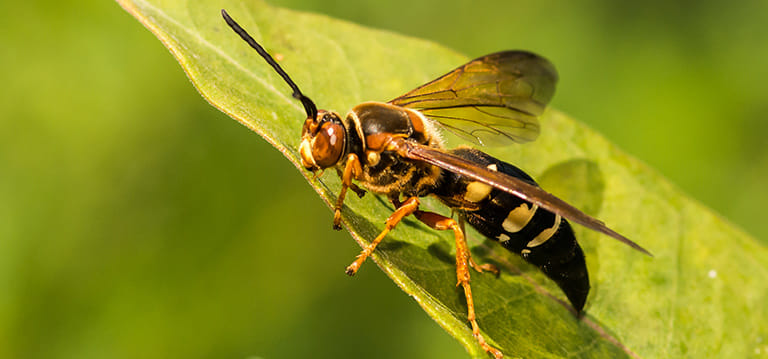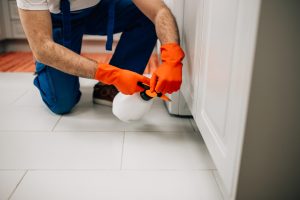Bugs, Bats, and Beyond: The Best Pest and Wildlife Control
You’re settling in for a quiet evening when you hear scratching in the walls. Maybe you’ve noticed mysterious droppings in your pantry, or perhaps you’ve spotted a bat swooping through your living room. These unsettling discoveries remind us that our homes aren’t always as private as we think.
Effective pest and wildlife control protects more than just your comfort—it safeguards your health, preserves your property value, and ensures your family’s safety. From tiny ants marching across your kitchen counter to raccoons setting up residence in your attic, unwanted visitors can cause serious problems if left unchecked.
Understanding the full spectrum of best pest and wildlife control services helps homeowners make informed decisions for their property protection. Let’s explore everything you need to know about keeping your home secure from unwanted intruders.
Common Household Pests: Identification and Early Warning Signs
Visual Identification Guide
Not every bug deserves the boot. Ladybugs control aphids, while spiders catch mosquitoes and flies. However, carpenter ants bore through wooden structures, and cockroaches spread diseases. Learn to identify the difference: beneficial insects typically have bright colors or delicate features, while many harmful pests appear more robust with darker coloring. Termites have straight antennae and equal-sized wings, while flying ants have elbowed antennae and unequal wing sizes.
Seasonal Patterns
Pest activity follows predictable patterns. Spring brings termite swarms and ant colonies emerging from winter dormancy. Summer sees peak mosquito breeding and wasp activity. Fall triggers rodents seeking warm shelter, while winter forces many pests indoors. Understanding these cycles helps you prepare defenses before problems escalate.
Damage Assessment
Early detection saves money and prevents extensive damage. Look for mud tubes along foundations (termites), small holes in wood with sawdust piles (carpenter ants), or gnaw marks on food packages (rodents). Staining on walls, unusual odors, or finding dead insects in window sills all signal growing problems that need immediate attention.

The Science Behind Modern Pest Control Methods
Integrated Pest Management (IPM)
IPM focuses on long-term prevention through biological control, habitat manipulation, and targeted chemical use only when necessary. This approach monitors pest populations, identifies problem sources, and applies the least toxic methods first. For example, sealing entry points and removing food sources often eliminates pest problems without chemicals.
Eco-Friendly Solutions
Green pest control uses botanical oils, beneficial bacteria, and natural predators to manage pest populations. These methods protect children, pets, and beneficial insects while effectively controlling harmful pests. Essential oils like peppermint deter rodents, while diatomaceous earth eliminates crawling insects without toxic residue.
Chemical vs. Non-Chemical Approaches
Severe infestations often require chemical treatments for immediate control, followed by non-chemical prevention methods. Non-chemical approaches work well for minor problems and ongoing prevention. Professional technicians assess each situation to determine the most appropriate combination of methods for lasting results.
Wildlife Control: Beyond Traditional Pest Management
Common Wildlife Intruders
Raccoons leave distinctive paw prints and tend to knock over garbage cans. Squirrels create entry holes about two inches in diameter and leave behind chewed nuts or acorns. Bats produce small, crumbly droppings and emit high-pitched sounds. Each species requires different removal strategies based on their behavior patterns and nesting preferences.
Humane Removal Techniques
Professional wildlife control uses one-way exclusion devices, live trapping, and habitat modification to encourage animals to relocate naturally. These methods comply with local wildlife protection laws while ensuring animals aren’t harmed during removal. Timing matters—removing animals during breeding seasons can leave orphaned young trapped inside structures.
Prevention Strategies
Effective wildlife prevention involves sealing holes larger than a quarter-inch, installing chimney caps, and trimming tree branches away from rooflines. Remove food sources like pet food, bird feeders, and accessible garbage. Regular maintenance prevents most wildlife intrusions before they become costly problems.
Health Risks Associated with Pest and Wildlife Infestations
Disease Transmission
Rodents carry over 35 diseases, including hantavirus and salmonella. Cockroaches spread E. coli and typhoid fever through contaminated surfaces. Bats can transmit rabies, while ticks spread Lyme disease. Even seemingly harmless pests like flies transfer pathogens from garbage to food preparation areas, creating health risks for your entire family.
Allergies and Respiratory Issues
Cockroach allergens trigger asthma attacks, particularly in children. Dust mites worsen respiratory conditions, while rodent dander causes allergic reactions. Accumulated pest waste and shed skin particles degrade indoor air quality, leading to chronic respiratory problems that often go undiagnosed until pest control eliminates the source.
Food Contamination
Pests contaminate food through direct contact, droppings, and bacteria transfer. A single mouse produces up to 75 droppings daily, while cockroaches regurgitate on surfaces as they feed. Proper food storage in sealed containers and regular cleaning prevents contamination, but established infestations require professional treatment to ensure complete elimination.

DIY vs. Professional Pest Control: Making the Right Choice
Cost-Benefit Analysis
Professional pest control often costs less than repeated DIY attempts plus property damage repairs. Professionals identify and treat root causes rather than just visible symptoms, preventing recurring infestations. The upfront cost of professional service typically saves thousands in structural repairs and medical expenses related to pest-borne illnesses.
Safety Considerations
Improper pesticide application creates health risks and environmental contamination. Professional technicians understand proper application rates, safety equipment, and chemical interactions. They’re trained to identify which products work for specific pests without endangering family members or pets through overuse or misapplication.
Effectiveness Comparison
Professional-grade products and application techniques achieve better results than consumer products. Professionals access restricted-use pesticides and have extensive training in pest biology and behavior. Their systematic approach addresses all life stages of pests and includes follow-up treatments to ensure complete elimination.
Seasonal Pest Control Strategies for Year-Round Protection
Spring Preparation
Spring pest control focuses on preventing breeding cycles before they begin. Apply pre-emergent treatments for ants and termites, seal winter damage that creates entry points, and eliminate standing water where mosquitoes breed. Early intervention prevents small populations from exploding into major infestations during peak breeding season.
Summer Maintenance
Summer brings peak pest activity requiring ongoing monitoring and maintenance. Regular treatments control mosquito populations, while perimeter spraying keeps ants and other crawling insects from entering your home. Proper lawn care and vegetation management reduce pest harborage areas around your property.
Fall and Winter Considerations
Fall preparation prevents pests from establishing winter colonies inside your home. Seal cracks and crevices before temperatures drop, remove outdoor attractants, and apply barrier treatments around foundations. Winter monitoring ensures any indoor populations are eliminated before spring reproduction begins.
Property Damage Prevention Through Proactive Control
Structural Damage
Termites cause over $5 billion in property damage annually by weakening wooden structures. Carpenter ants excavate galleries that compromise structural support beams. Rodents gnaw through electrical wiring, creating fire hazards, and their urine stains ceilings and walls. Early detection and treatment prevent minor problems from becoming major structural repairs.
Landscape Protection
Outdoor pest control protects landscaping investments from destructive insects and wildlife. Grubs destroy lawn root systems, while bagworms defoliate trees. Proper treatment timing preserves plant health and maintains attractive outdoor spaces that enhance property appeal and value.
Long-Term Value Preservation
Regular pest control maintains property values by preventing damage that deters potential buyers. Pest history disclosure requirements in many states make ongoing prevention essential for future resale value. Professional pest control documentation demonstrates responsible property maintenance to prospective buyers and insurance companies.

Choosing the Right Pest Control Company for Your Needs
Licensing and Certification
Verify that pest control companies hold current state licenses and technician certifications. Look for additional credentials like board certification or specialized training in integrated pest management. Licensed professionals understand local regulations, proper application techniques, and safety protocols that protect your family and property.
Service Guarantees
Reputable companies stand behind their work with service guarantees and follow-up treatments. Understand what’s covered under warranty terms and how quickly the company responds to callback requests. Comprehensive guarantees demonstrate confidence in treatment effectiveness and commitment to customer satisfaction.
Customer Reviews and References
Research customer reviews on multiple platforms and ask for local references. Long-term customers indicate consistent service quality and reliability. Pay attention to reviews mentioning communication, punctuality, and problem resolution to gauge overall customer experience beyond just treatment effectiveness.
Martin Exterminating: Local Experts Who Care
A Trusted Community Partner
With over 50 years serving the community, Martin Exterminating has built lasting relationships based on trust and consistent results. This locally owned and operated family business understands the unique pest challenges in our area and provides personalized solutions for every customer.
Comprehensive Services
From tiny ants to large wildlife, Martin Exterminating handles every type of pest problem. Their services include pest control, termite control, mosquito control, moisture control, wildlife control, crawl space encapsulation, and even insulation removal and installation. This comprehensive approach ensures all your property protection needs are met by one trusted team.
Customer-Centered Approach
Martin Exterminating stands behind every inspection and service their expert technicians perform. They provide quick response times, transparent pricing, and lasting results that give you peace of mind. Their commitment to excellence shows in every interaction, from initial consultation through ongoing maintenance.
Your Path to a Pest-Free Home
Effective pest and wildlife control requires understanding the threats, choosing appropriate methods, and partnering with experienced professionals when needed. Start by implementing basic prevention measures like sealing entry points and eliminating food sources. Monitor your property regularly for signs of pest activity, and don’t wait for small problems to become major infestations.
Take action immediately when you notice pest signs. Document any damage or activity patterns to help professionals develop targeted treatment plans. Remember that seasonal preparation prevents many problems before they start, saving you time and money while protecting your family’s health.
Working with experienced local experts like Martin Exterminating ensures your pest control needs are handled professionally and effectively. Their decades of experience and comprehensive services provide the expertise you need for long-term peace of mind. Contact them today to schedule your property evaluation and start protecting your home from unwanted invaders.
https://www.google.com/maps?cid=16959640794849830802






